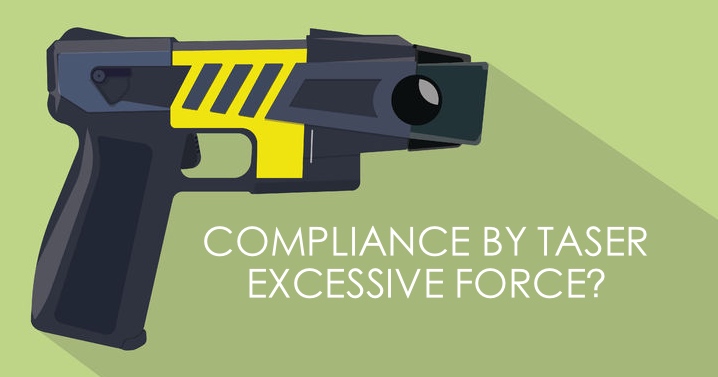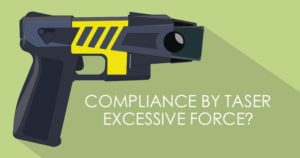
 In Brown v. Illinois, 422 U.S. 590 (1975), the U.S. Supreme Court identified three factors that courts should consider when determining whether the taint of an unlawful arrest was attenuated prior to obtaining a confession:
In Brown v. Illinois, 422 U.S. 590 (1975), the U.S. Supreme Court identified three factors that courts should consider when determining whether the taint of an unlawful arrest was attenuated prior to obtaining a confession:
1. The temporal proximity of the arrest and the confession;
2. The presence of intervening circumstances; and
3. The purpose and flagrancy of the official misconduct (in making the arrest).
In May of 2012, in State v Mazuca, the Texas Court of Criminal Appeals considered the proper application of the “attenuation of taint doctrine,” not to a confession, as in Brown, but to contraband that is seized immediately following an unconstitutional detention or arrest. The question presented was this:
Will the discovery of an outstanding arrest warrant in the relatively few moments that ensue between the illegal stop and the seizure of the contraband invariably serve as an intervening event sufficient to purge the taint of the primary illegality?
In Mazuca, an El Paso police officer stopped the car in which appellee was a passenger because the officer believed he saw white light (rather than red) emitting from the tail lights. Photos at trial would later prove that the tail lights were indeed red and that the car was not in violation of the Texas Transportation Code. During the stop, the officer requested to see appellee’s driver’s license, and quickly learned that appellee had outstanding warrants. During the course of the stop (after learning about the warrants) the officer seized both ecstasy and marijuana from appellee. Appellee moved to suppress the contraband as the fruits of an illegal search. The trial court granted the motion, making, inter alia, the following findings of fact and conclusions of law:
1. The driver of the Mustang did not violate Section 547.322 of the Transportation Code on December 11, 2008.
2. The Police Officers did not have probable cause or reasonable suspicion to perform a traffic stop on that date.
3. The arrest warrants of the Defendant did not purge the taint of the illegal stop due to the flagrancy of the police action, the close temporal proximity and the fact that no Miranda warnings were read.
The 8th Court of Appeals (El Paso) affirmed. The CCA considered the Supreme Court precedent, as well as the Texas Court of Appeals opinions in coming up with the rule below:
When police find and seize physical evidence shortly after an illegal stop, in the absence of the discovery of an outstanding arrest warrant in between, that physical evidence should ordinarily be suppressed, even if the police misconduct is not highly purposeful or flagrantly abusive of Fourth Amendment rights. Under this scenario, temporal proximity is the paramount factor. But when an outstanding arrest warrant is discovered between the illegal stop and the seizure of physical evidence, the importance of the temporal proximity factor decreases. Under this scenario, the intervening circumstance is a necessary but never, by itself, wholly determinative factor in the attenuation calculation, and the purposefulness and/or flagrancy of the police misconduct, vel non, becomes of vital importance.
While the rule sounds simple enough, the CCA’s application of the rule to the facts of the case is a bit troubling. The CCA reversed the Court of Appeals, and held that…
[T]he behavior of the arresting officers, although clearly unlawful at the outset, was not so particularly purposeful and flagrant that the discovery of the appellee’s outstanding arrest warrants may not serve to break the causal connection between the illegal stop and the discovery of the ecstasy in the appellee’s pants pocket, thus purging the primary taint. We hold that the trial court erred to conclude otherwise.
The opinion in this case seems a logically disconnected from the ultimate outcome. Apparently, some of the judges agree. Here’s what Judge Meyers had to say in his dissenting opinion:
The result fashioned by the majority opens the door for police to ignore the probable cause requirement and make traffic stops without adequate grounds for doing so. The majority’s analysis of the weight of the Brown factors may be correct, but the result discounts the trial court’s findings as to the credibility of the officers.
Judge Johnson dissented as well, writing:
I would hold that the court of appeals correctly recognized that, without the highly improper traffic stop, the officers could not have learned appellee’s name, found active warrants, or searched him and recovered contraband, all fruits of the poisonous tree. We, like the court of appeals, should “afford almost total deference to a trial court’s determination of historical facts that are supported by the record, particularly when such findings are based on an evaluation of witnesses’ credibility and demeanor” and affirm its suppression of the evidence that was obtained because of the improper traffic stop. I respectfully dissent.
If you were the subject on an unlawful arrest on a drug crimes case, contact the Fort Worth, Texas drug crimes defense lawyers at Barnett Howard & Williams PLLC today. (817) 993-9249.


 In
In 
 A federal agent saw Appellant walk out of a house under surveillance as part of a
A federal agent saw Appellant walk out of a house under surveillance as part of a 
 Delafuente v. State
Delafuente v. State The State of Texas charged and convicted
The State of Texas charged and convicted 
 Boy, do we love our cellphones. They are our phone books, our computers, our gaming systems, our cameras, our music players, you name it. When a person’s cell phone is such a multifaceted device, how can that affect their legal rights under a search warrant? Read the summary of the case below to find out more about how the 4th Amendment applies to a cell phone search.
Boy, do we love our cellphones. They are our phone books, our computers, our gaming systems, our cameras, our music players, you name it. When a person’s cell phone is such a multifaceted device, how can that affect their legal rights under a search warrant? Read the summary of the case below to find out more about how the 4th Amendment applies to a cell phone search.
 Out near El Paso, the law enforcement folks are pretty anal about boundaries. Apparently, their “border-protection” mentality applies equally to law enforcement officers from neighboring jurisdictions. Below is a summary from a federal quarrel between officers of El Paso and Hudspeth Counties. While it isn’t directly on point for this blog, it is tangentially related to Texas criminal law and it has a little bit of 4th amendment seizure flavor to it.
Out near El Paso, the law enforcement folks are pretty anal about boundaries. Apparently, their “border-protection” mentality applies equally to law enforcement officers from neighboring jurisdictions. Below is a summary from a federal quarrel between officers of El Paso and Hudspeth Counties. While it isn’t directly on point for this blog, it is tangentially related to Texas criminal law and it has a little bit of 4th amendment seizure flavor to it.
 Supreme Court Case Review –
Supreme Court Case Review – 







